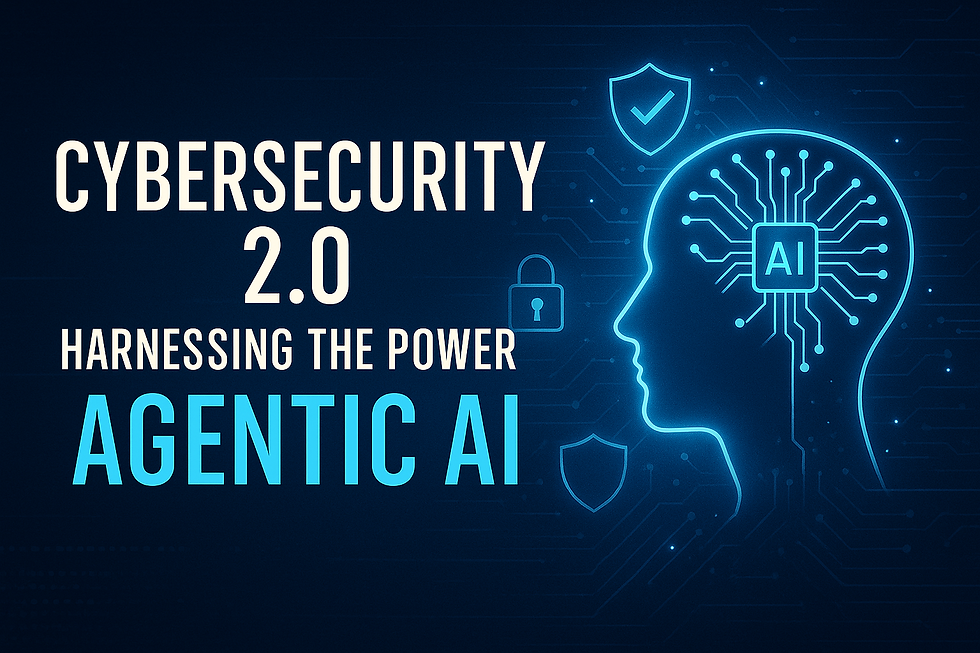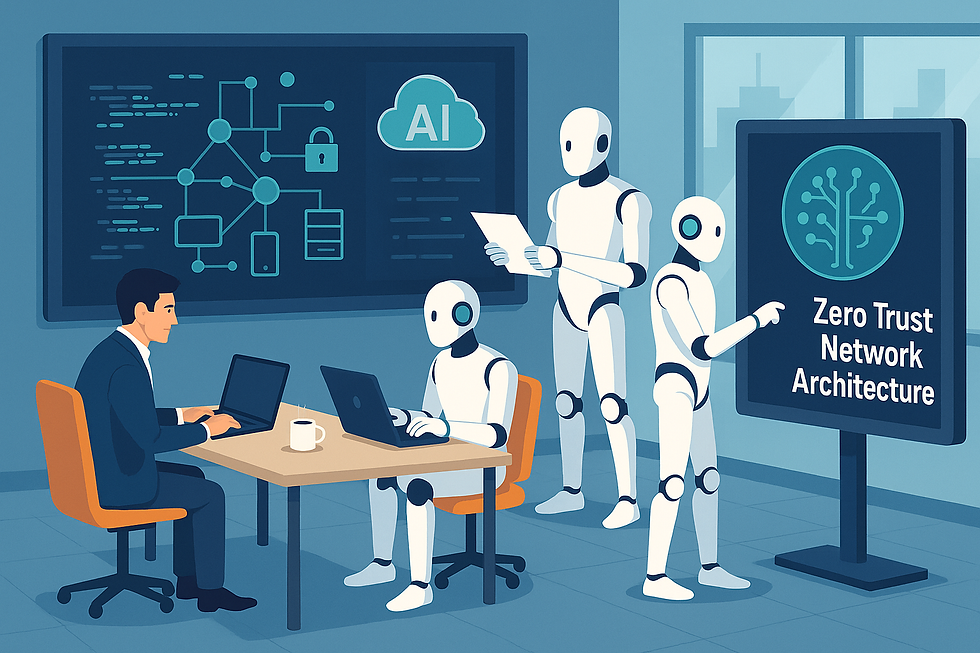AI: A Potentially Powerful Ally in the Fight Against Cyber Threats
- Brian Gutreuter

- Aug 5
- 4 min read
In an era where cyber threats grow more sophisticated by the day, artificial intelligence (AI) has emerged as a game-changer in cybersecurity. With its ability to process vast amounts of data at lightning speed, AI is transforming how organizations detect, respond to, and prevent cyberattacks. However, while AI is a formidable tool, it’s not a cure-all. Its effectiveness hinges on proper implementation, human oversight, and the ability to counter AI-driven threats wielded by cybercriminals. This article explores AI’s strengths, limitations, and the dual-use challenge shaping the future of cybersecurity.
AI’s Strengths: Speed, Scale, and Smarts
AI’s power in cybersecurity lies in its unparalleled speed, scalability, and pattern recognition, which help organizations stay ahead of increasingly complex threats. Here are three important ways AI is revolutionizing cyber defense:
· Threat Detection and Response: AI excels at sifting through massive datasets to identify anomalies in real time, catching threats that might slip past human analysts. For instance, machine learning models, like those powering Google’s spam filters, detect phishing emails with up to 99.9% accuracy by analyzing patterns in language and sender behavior. Tools like Microsoft Defender leverage behavioral analytics to spot zero-day exploits—previously unknown vulnerabilities—faster than traditional methods, giving defenders a critical edge.
· Automation and Efficiency: By automating repetitive tasks, AI reduces the burden on security teams and accelerates response times. Scanning for vulnerabilities or isolating low-level threats can now take seconds instead of hours. Companies like Darktrace use AI to monitor network traffic autonomously, flagging suspicious activity with minimal human intervention and reducing errors that often plague manual processes.
· Predictive Capabilities: AI doesn’t just react—it anticipates. By analyzing historical data and emerging trends, AI can forecast potential threats. For example, IBM’s Watson has been used to predict ransomware attacks by identifying precursor signals, such as chatter on dark web forums, enabling organizations to prepare before an attack strikes.
These capabilities make AI indispensable in a world where cyber threats evolve rapidly, from ransomware to advanced persistent threats (APTs). Yet, despite its strengths, AI has notable limitations that demand careful consideration.
The Limits of AI: No Silver Bullet
While AI enhances cybersecurity, it’s not foolproof. Its effectiveness depends on several factors, and missteps can leave organizations vulnerable. Here are the key challenges:
· False Positives: AI can sometimes flag benign activity as malicious, overwhelming security teams with alerts. This “noise” can lead to alert fatigue, where critical threats are missed amidst the clutter.
· Data Quality and Bias: AI models require high-quality, unbiased data to function effectively. Poor or skewed data can lead to inaccurate predictions or missed threats, undermining the system’s reliability.
· Implementation Gaps: A 2024 report revealed that 60% of organizations using AI for cybersecurity still experienced breaches, often due to misconfigurations or failure to adapt to evolving attacks. Without proper setup and continuous updates, AI tools can fall short.
These limitations highlight the need for human oversight to validate AI outputs, fine-tune models, and ensure systems remain robust against adaptive adversaries.
The Dual-Use Dilemma: AI as a Weapon
Perhaps the most pressing challenge is AI’s dual-use nature: the same technology that fortifies defenses can be weaponized by cybercriminals. A 2025 cybersecurity survey found that 70% of attackers now leverage AI tools, creating a high-stakes arms race. Here’s how adversaries exploit AI:
1. Sophisticated Social Engineering: Generative AI crafts convincing phishing emails or deepfake audio and video, tricking users into divulging sensitive information. These attacks are harder to detect than traditional phishing, as they mimic legitimate communication with eerie precision.
2. AI-Generated Malware: Cybercriminals use AI to develop polymorphic malware that mutates to evade detection. These adaptive programs can bypass conventional antivirus software, posing a growing threat to organizations.
3. Evolving Attack Strategies: AI enables attackers to analyze defenses, identify weaknesses, and tailor attacks at scale. For example, AI-driven bots can crack passwords or bypass CAPTCHAs, streamlining credential theft.
This dual-use challenge underscores the need for defenders to not only deploy AI but also anticipate how adversaries might exploit it. Staying ahead requires constant innovation and vigilance.
The Path Forward: Maximizing AI’s Potential
AI is undeniably a cornerstone of modern cybersecurity, offering unmatched speed and scalability to combat threats. However, its success depends on strategic implementation and a balanced approach. Organizations must:
Invest in Human Oversight: Skilled analysts are essential to validate AI alerts, reduce false positives, and ensure systems adapt to new threats.
Prioritize Data Quality: Feeding AI models with accurate, diverse data minimizes bias and maximizes accuracy.
Stay Ahead of Adversaries: Continuous updates to AI tools are critical to counter AI-driven attacks, such as deepfakes or adaptive malware.
Foster Collaboration: Sharing threat intelligence across industries can help defenders anticipate and neutralize AI-powered attacks.
As cyber threats grow in scale and complexity, AI will remain a vital ally—but only if wielded wisely. The future of cybersecurity lies in harnessing AI’s strengths while addressing its limitations and preparing for its misuse by adversaries.
Conclusion: A High-Stakes Balancing Act
AI is reshaping cybersecurity, empowering defenders to detect, respond, and predict threats with unprecedented efficiency. From Google’s phishing filters to IBM’s predictive analytics, AI-driven tools are proving their worth in the fight against cyberattacks. Yet, the technology’s limitations—false positives, data dependency, and implementation challenges—remind us it’s not a panacea. The rise of AI-powered attacks, used by 70% of cybercriminals, adds another layer of complexity, turning the cyber battlefield into a relentless arms race.
To win this fight, organizations must blend AI’s capabilities with human expertise, robust data practices, and proactive adaptation. The stakes are high, but with the right approach, AI can tip the scales in favor of defenders, securing our digital world against the evolving threat landscape.





Comments